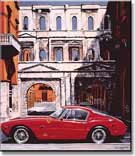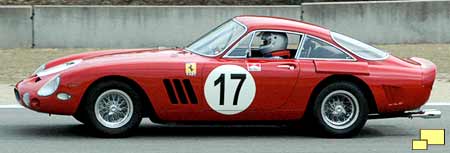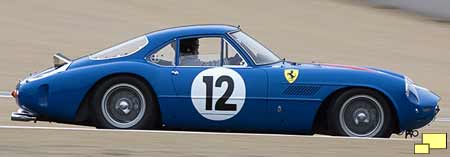
Interior
Engine/Transmission
GTO Up Close
Racing GTO
1984 GTO
GTO Exposed
GTO Specifications
Car and Driver
Comparison
GTO Trivia
Pontiac GTO
GTO Books
by Ken Eberts

Click Here
to purchase from CarArtInc.com
|
|
|||||||||
|
|||||||||
|
Ask an automobile enthusiast what the greatest name in cars is and most will answer "Ferrari". No other company can come close to Ferrari's record when it comes building fast, exciting and passionate cars.
If Ferrari makes the greatest cars, what then is the greatest Ferrari? Most followers of the marque would answer "GTO". Amongst a history of cars that defined style, speed and excitement, the GTO is the ultimate. |
|||||||||
|
|||||||||
|
|||||||||
| The Ferrari GTO is a dual purpose car. These are cars that are designed for both the street and race track. In this great tradition, an owner could drive the car to the track, race it, and then drive it home. It is a fact that characteristics that make a car excel on the race track do not make for a good street car and what makes a good street car will make a car uncompetitive on the race track. In the early 1960s, technology was such that succeeding in both areas was possible. | |||||||||
|
|||||||||
|
|||||||||
|
|
|||||||||
Ferrari GTO, Part II |
|
Note: Clicking on an image with this symbol ( (A new window will open in your browser) |
||

Suggestions? Comments? Tell us!!! |

|
|
|
|
||
|
Special thanks to: Bob (VBob) Krueger, David (Woody) Woodhouse, Steve Sego, Neil Zlozower, Mike Sheehan and Frances Pollock. |
||




